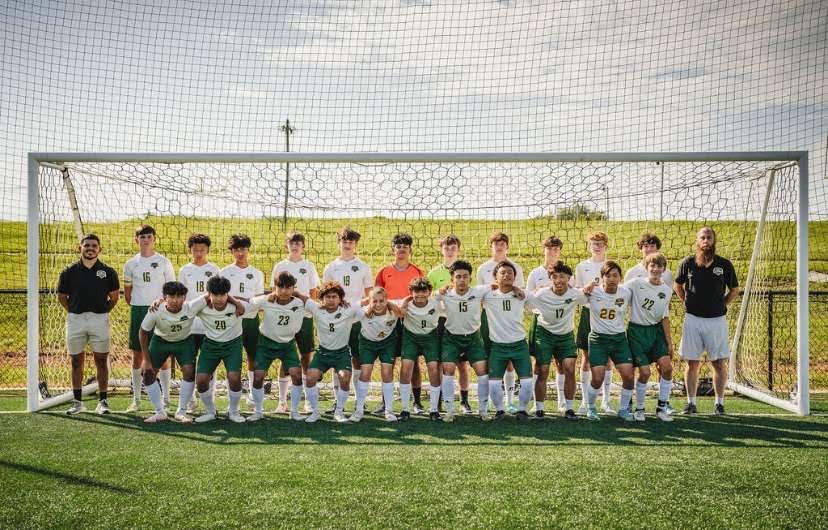Between SnapChat, Instagram, TikTok and more, constant scrolling seems to be the gist. For the 2024-2025 school year, Greenwood High School (GHS) has changed their cell phone policy. Mr. Adam Hatcher, the school’s principal, believed they were becoming a major distraction in the classroom; although, students became enraged by the sudden change in policy. Since the start of the school year, he is staying true to that decision of reducing phone usage. The GHS 2024-2025 Student/Parent Handbook clearly explains, “Cell phone usage, including texting, calling, streaming, browsing, etc. is strictly prohibited during instructional time (defined as 1st, 2nd, 3rd, & 4th Blocks, as well as SWAMP and school assemblies) and also includes when students are allowed to leave the classroom during instructional time for the restroom. Phones in the hallway, common areas, or restrooms during instructional time are subject to the consequences of a cell phone violation.” Furthermore, “All cell phones must be turned off or switched to silent mode and stored securely out of sight during instructional time,” and “If a student refuses to place their cell phone in the designated location and is caught with a cell phone, it will be an office referral.” Students are not permitted to have their phone, earbuds, or smart watch out during instructional time per the student handbook. Makenna Fyhr, Ms. MaryBeth McGinty, and Clara Willis were asked their opinions on the new policy.
Fyhr, a sophomore, is a returning student to GHS and has lived through the “free days” (as some upperclassmen call the time where they had “freedom” with phones). She wishes her phone was allowed because it is hard to communicate with people like her parents or other people outside of the building. Fyhr would change the new policy, if she had the power, because she wants peers to have the opportunity to talk with their necessary people. Last year, for her freshman year, it was helpful because if she was sick she could call her family. Also, she did not have a calculator for math, so she would use her phone as a calculator. This year, her teachers reinforce the policy by using the phone caddy, yet some of her teachers do not care nor check if they have put their phones away in the caddy. The policy has definitely changed to become more strict, yet she explained that her teachers didn’t change with the policy – they just do not care enough.
Willis, a freshman at GHS, never got to experience the old policy with “phone freedom.” She wishes that the policy had not changed because she never got to experience school with phones allowed the whole time. She thought of it as part of the “high school experience.” Willis elaborated that having her phone is nice for her to communicate with people outside of school during the day (like Fyhr persisted) and she likes listening to music which helps her focus when working. She believes that the change in policy was not a good idea because kids will “just rebel and use them anyway.” Her teachers — like most — use the phone caddies. (Disclaimer — Teachers are supposed to reinforce the phone caddies during instruction time to discourage students from using their phones.) Willis was disappointed when learning about the policy; however, she shined some light on the change: she is “addicted” to her phone and this keeps her off of it more. She finished by saying it is fair that they changed it because some kids do bad things with their phones, yet it is not fair for the students — like herself — that do not abuse the opportunity.
Ms. McGinty, a teacher at GHS, has been at GHS for many years. She has witnessed the first-hand effects of cellular devices in school. Between phone evolution and policy changes, there are many ways Ms. McGinty likes to keep phones out of her classroom to reduce distractions. Over the years, Ms. McGinty has implemented the current cell phone policy anyway so she is happy to know there isn’t really a choice to use phones anymore. She said that, “The new policy is helpful because kids would keep or hide their phones in their backpacks because ‘so and so said that we could have them out.’ This wasn’t what I wanted my students to follow though. So now, they can’t say things like this because of the new policy; it is required.” There was originally a time where phones were to be left in lockers. Although there is a change in the policy, Ms. McGinty believes that students are lucky to even get this amount of usage with phones. For them (administration) to have realized that students “deserve” more screen time confuses her because there is not a real need for them. The only change from last year was the idea that teachers weren’t required to take up phones or they could do what they want with them. She elaborated that her belief is that phones are distractions and the new policy helps prevent this issue. In her classes, she doesn’t allow phones because “…there is no need for them. Students have their computers. The only exception is my Journalism class — they are the only ones that use them and that is for interviews. Although, those may be going away soon too.”
All in all, the new phone policy definitely caught some people off guard. Teachers seem to enjoy having their classroom not be taken over by cellular devices; however, students seem annoyed, wishing there was a way to have their phones. It is clear there are many different thoughts about this policy, but administration at GHS has made it clear that phones aren’t to be used during instructional time. From now on, it doesn’t seem like there will be much of a change within the policy. Cell will stay a no (at least during instructional time).











